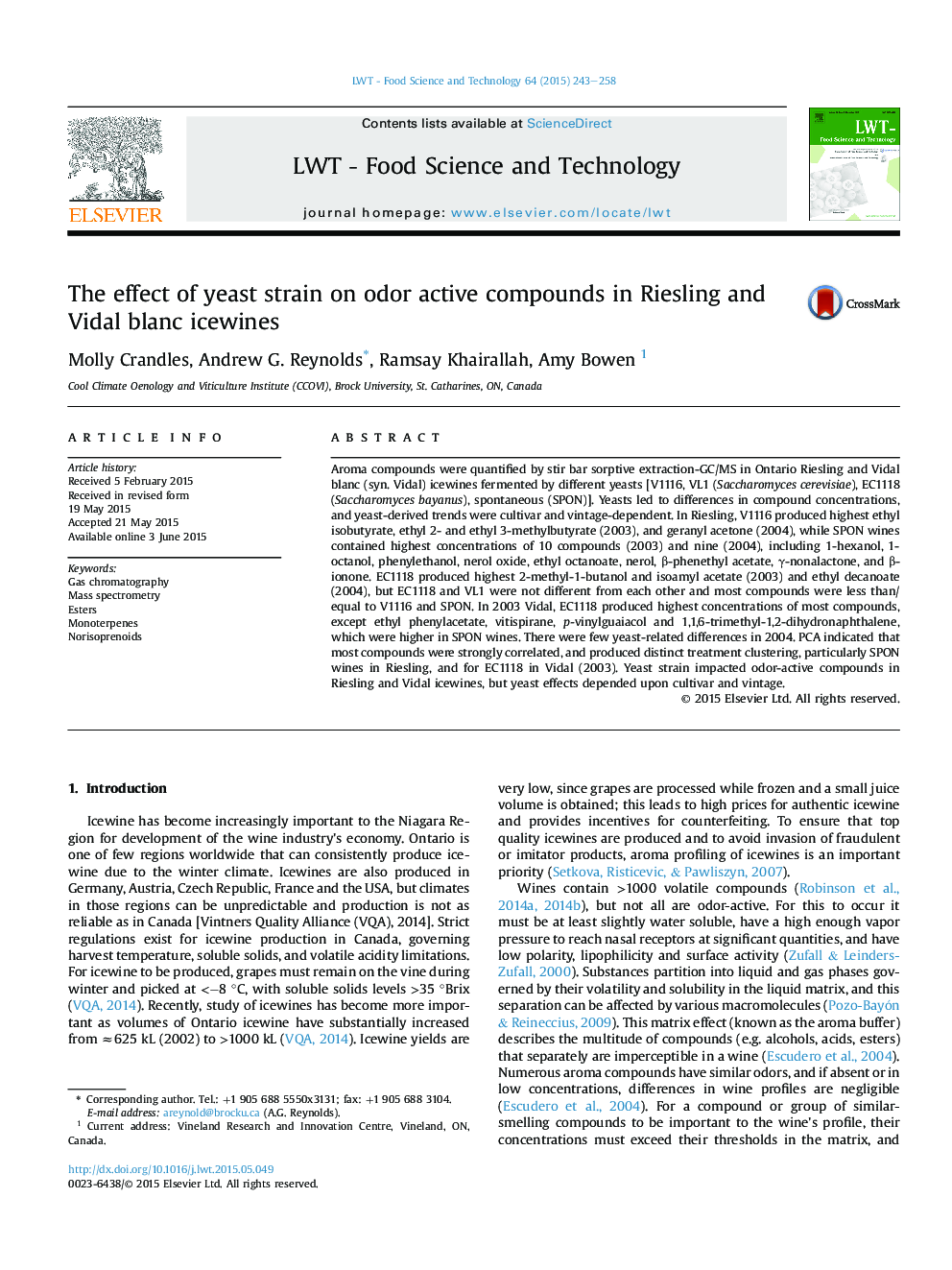| کد مقاله | کد نشریه | سال انتشار | مقاله انگلیسی | نسخه تمام متن |
|---|---|---|---|---|
| 6400764 | 1330877 | 2015 | 16 صفحه PDF | دانلود رایگان |
- Aroma compounds in Riesling and Vidal icewines fermented by 4 yeast treatments were quantified by GC-MS.
- Yeast-derived effects in aroma compounds were cultivar and vintage-dependent.
- Spontaneous fermentations (Riesling) produced highest concentrations of 10 compounds (2003) and 9 (2004).
- EC1118 (Vidal 2003) had highest concentrations of most compounds; few differences occurred (2004).
- Yeasts affected aroma compound concentrations; these interacted with cultivar and vintage.
Aroma compounds were quantified by stir bar sorptive extraction-GC/MS in Ontario Riesling and Vidal blanc (syn. Vidal) icewines fermented by different yeasts [V1116, VL1 (Saccharomyces cerevisiae), EC1118 (Saccharomyces bayanus), spontaneous (SPON)]. Yeasts led to differences in compound concentrations, and yeast-derived trends were cultivar and vintage-dependent. In Riesling, V1116 produced highest ethyl isobutyrate, ethyl 2- and ethyl 3-methylbutyrate (2003), and geranyl acetone (2004), while SPON wines contained highest concentrations of 10 compounds (2003) and nine (2004), including 1-hexanol, 1-octanol, phenylethanol, nerol oxide, ethyl octanoate, nerol, β-phenethyl acetate, γ-nonalactone, and β-ionone. EC1118 produced highest 2-methyl-1-butanol and isoamyl acetate (2003) and ethyl decanoate (2004), but EC1118 and VL1 were not different from each other and most compounds were less than/equal to V1116 and SPON. In 2003 Vidal, EC1118 produced highest concentrations of most compounds, except ethyl phenylacetate, vitispirane, p-vinylguaiacol and 1,1,6-trimethyl-1,2-dihydronaphthalene, which were higher in SPON wines. There were few yeast-related differences in 2004. PCA indicated that most compounds were strongly correlated, and produced distinct treatment clustering, particularly SPON wines in Riesling, and for EC1118 in Vidal (2003). Yeast strain impacted odor-active compounds in Riesling and Vidal icewines, but yeast effects depended upon cultivar and vintage.
Journal: LWT - Food Science and Technology - Volume 64, Issue 1, November 2015, Pages 243-258
